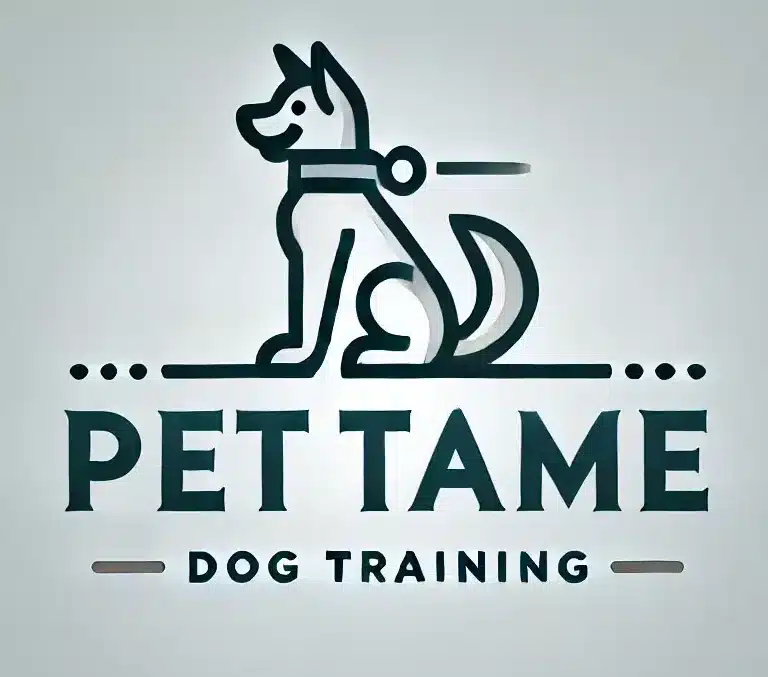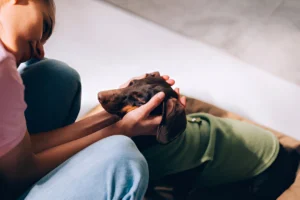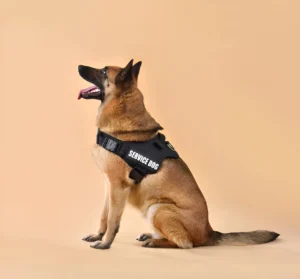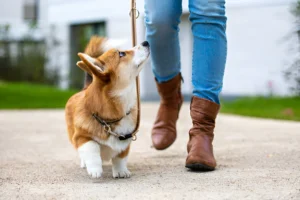How to Train Senior Dog to Pee on Pad Without Stress
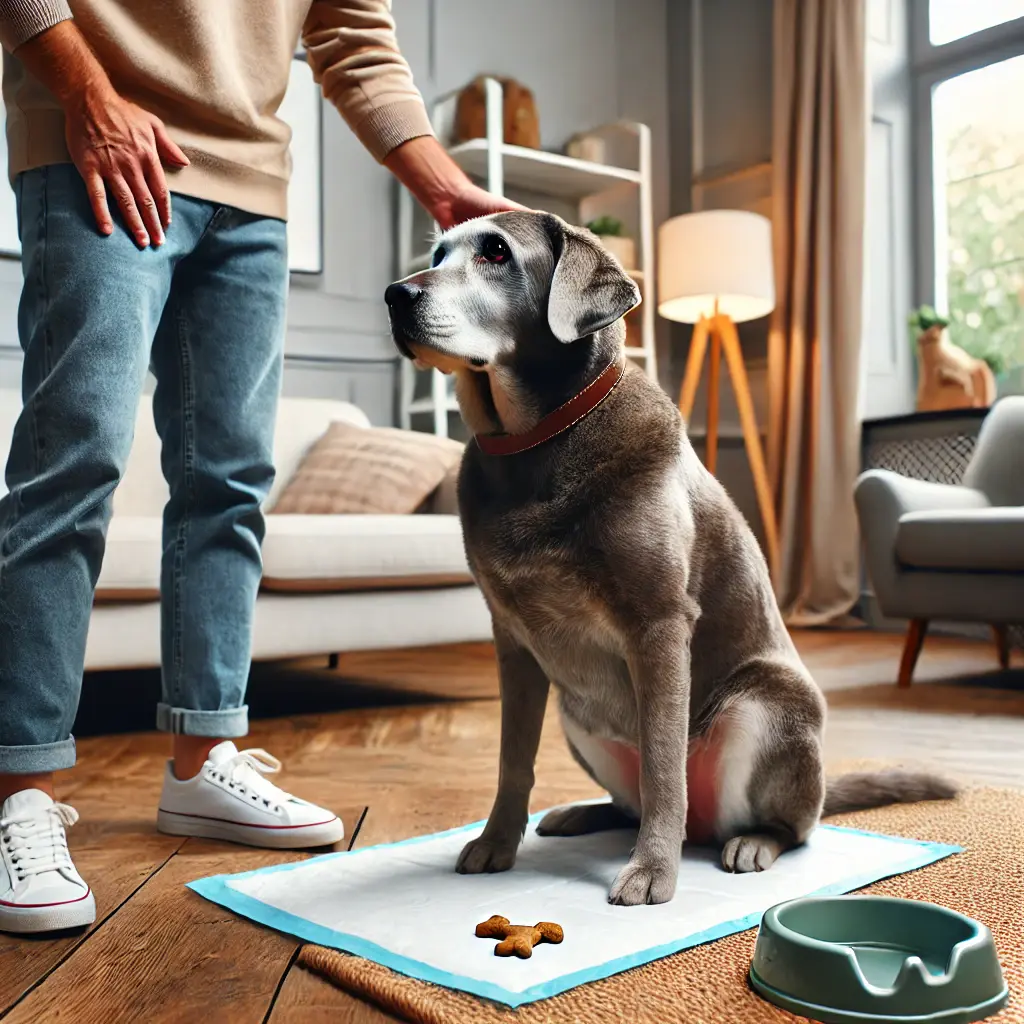
Urinary tract infections and other mobility problems may arise as your dogs get older, making it more difficult for them to urinate outside as they once did.
Your cleanups will be much simpler and less messy so if you use a pee pad instead. Similar tests might arise if you recently adopted an elderly dog.
If you have been taking outdoor bathroom breaks for years, you are moving to a flat where your only option is an indoor pee pad.
As a result, if your dog has trouble going outside on time, In this guide, we will guide you on how to train senior dog to pee on pad. The idea of teaching an elderly dog to use potty pads indoors is a great one.
Understanding the Basics of Senior Dog Potty Training
There are certain problems in potty training elderly dogs. Dogs’ bathroom needs often change as they get older. Thus, let’s explore why senior dogs might need indoor potty solutions and the benefits of pee pad training.
Why Indoor Potty Solutions May Be Necessary for Older Dogs
Learning how to train senior dog to pee on pad can boost your dog health. Elderly dogs every so often have physical rules that make going outside difficult. Also, signs of cognitive dysfunction syndrome are common in older dogs.
Their capacity to express their toilet needs may be impacted by this. Accidents can also occur more frequently as a result of medical conditions like kidney illness or urinary incontinence.
For many elderly dogs, these issues necessitate indoor potty solutions
How To Pad Train An Older Dog
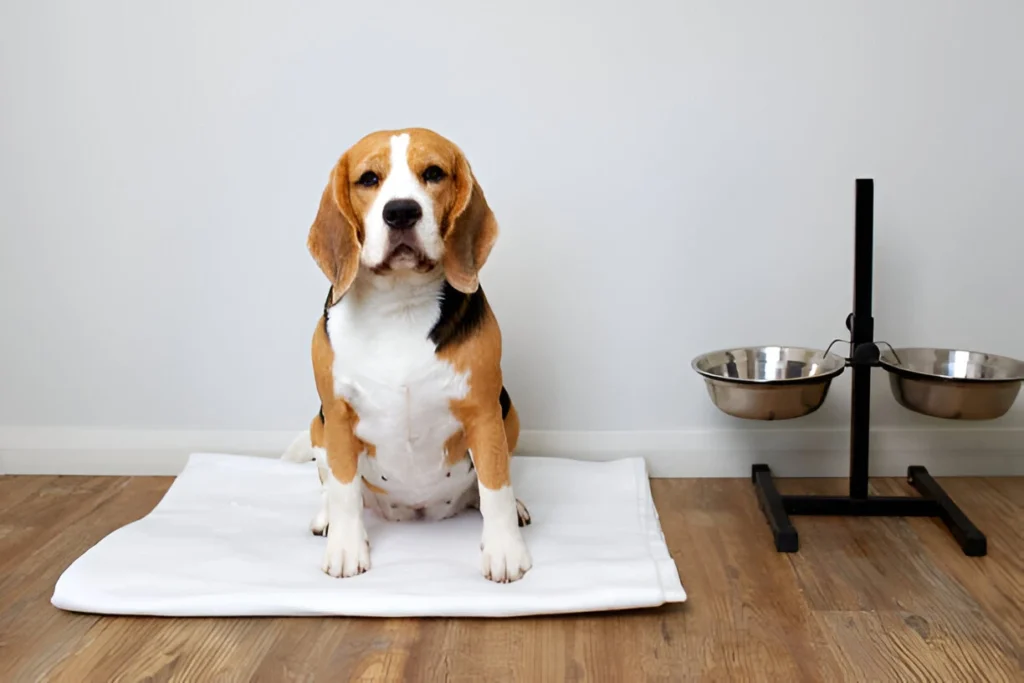
1. Select the Suitable Dog Pee Pad
You will need to buy a decent pee pad as a means to train an older dog.
Also, disposable and washable (reusable) pee pads are one of the best options available on the market. The decision between those two is based on personal tastes.
But in both situations, you must ensure that the pee pad has the following traits:
Fast Absorption
This is the most crucial aspect to take into account. Choose multilayered pee pads composed of polymers that are extremely absorbent.
Durability
The pee pad must be strong enough to support your dog’s weight without developing leaks or breaking.
Controlling Odor
High-quality pee pads have an odor-fixing layer of materials. Such as activated charcoal, which very lessens urine odor.
Ideal Dimensions
Since pee pads come in a variety of sizes. So, you must choose the one that will fit your dog comfortably. Further, you can use a puppy pad for smaller breeds.
A Non-Slip Bottom
In order to minimize mess, pee pads largely reusable ones will have a rubber bottom that strengthens the pad and keeps it steady on the floor.
2. Restrict access to alternative restrooms:
It’s crucial to restrict your dog’s access to alternative potty options in order to avoid confusion.
While a pee pad is being taught to them. So, you will need to use the pee pad to keep them confined to a small area so they are forced to use it.
3. Quickly clean up mishaps:
Accidents will inevitably occur during the training process. So it’s critical to clean them up as soon as possible. Any residual smells can be stopped by using an enzymatic cleaner.
Because dogs who can still smell the place of their past accidents are more likely to urinate there.
4. If necessary, seek professional assistance:
Do not be afraid to ask a professional dog trainer for help if you are sharing problems teaching your older dog to use a pee pad.
They can offer you tailored advice and pointers to facilitate the training process.
5. Use positive reinforcement:
Training any dog, but especially older dogs, requires the use of positive support.
When your dog successfully uses the pee pad, reward them with praise, treats, or playtime. They will be more inclined to use it going forward as a result.
6. Maintain uniformity in the pee pad’s placement:
Keeping the pee pad in the same spot is crucial after your dog has mastered its use.
Also, it may become difficult for your dog to remember where they are believed to go potty if you move the pee pad around.
Crucial Guidance to Bear in Mind While Teaching How to Train Senior Dog to Pee on Pad
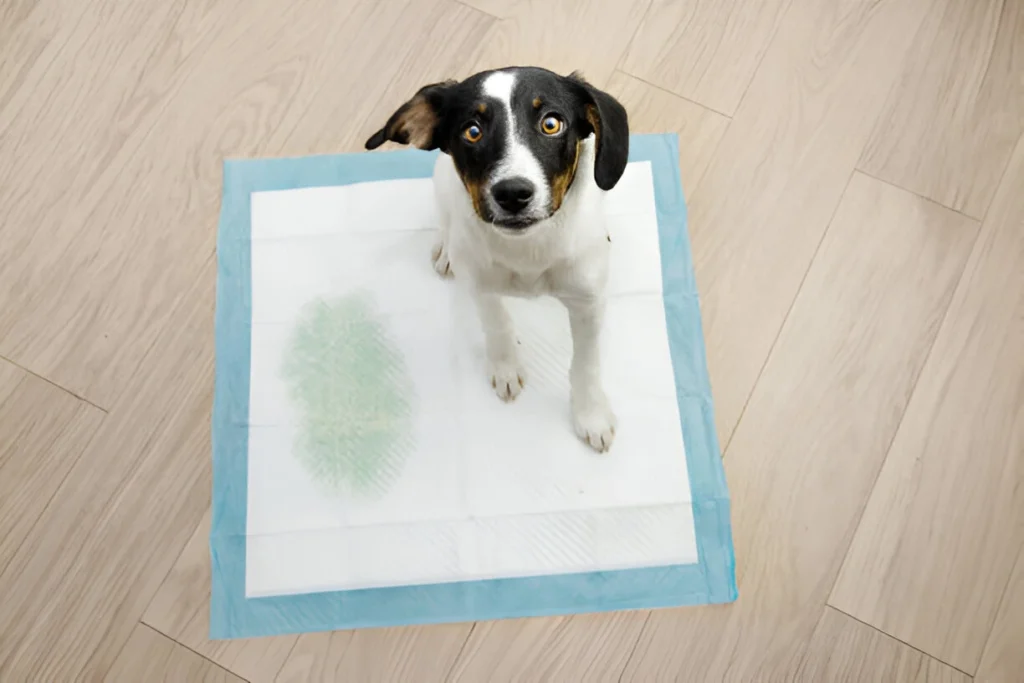
You know all about how to train senior dog to use pee pad. Now you must know some things for the duration of training.
1. Make a good pee pad purchase
Steer clear of inferior options when purchasing a pee pad, as they may be fragile and unreliable. The regularity of the training may then need to be broken by switching to a better option.
Besides, good pee pads contain pheromones that calm your dog and speed up their urination. An excellent option here would be a pee pad that mimics a synthetic grass patch if your dog is inured to using the grass for urination.
Because your dog will already be inclined to use that pad to relieve himself. Also, choosing something more familiar can very expedite the training process and save you a great deal of time.
In addition, there are certain ways you can teach pad training an older dog. These are you can establish a routine, utilizing positive reinforcement, etc.
2. Patience and regularity Are Essential
One of the most important factors in potty training success is consistency, which includes verbal cues, praise, treats, and schedules in addition to timing and schedule.
When teaching an elderly dog to urinate on a pad, this idea is applicable.
But you should also be extra patient with older dogs. Keep in mind that older dogs already have a routine. in order for them to find it difficult to give it up.
A dog will eventually comply with your wishes, regardless of how stubborn they may be. When learning to potty pad trains an older dog. It’s crucial to maintain consistency and to keep trying if your dog takes longer than usual to pick things up.
3. Employ a Professional Trainer When All Other Options Have Failed
It should normally take you a few days to a few weeks to learn how to potty pad train an older dog. Hiring an expert dog trainer will teach you how to train senior dog to pee on pad in detail.
A good workout should ideally show results within the first week. The success rate, however, can differ from dog to dog.
If your dog continues to fail after several weeks of trying, it may be time to seek assistance from a professional dog trainer.
Another option to lessen the impact of accidents is to use easy dog diapers.
4. Purchase a Good Pee Pad
When purchasing a pee pad, steer clear of low-quality models as they may be fragile and unreliable. The training’s consistency may then need to be broken by switching to a better option.
Pheromones found in high-quality pee pads also help your dog relax and go more quickly. A pee pad that mimics a real grass patch would be a smart option if your dog is accustomed to using the grass for urination.
Selecting a more familiar option can significantly expedite the training process because your dog will be more likely to use that pad for urination, saving you a great deal of time.
5. Be Aware of What You Use to Clean
Even the most trainable dog will every so often have mishaps. Using the proper cleaning supplies is a crucial step in teaching an elderly dog to use potty pads.
After your dog, while cleaning and disinfecting. Cleaners and disinfectants that contain ammonia are a good example of this. Although they work well, they can fool your dog into using the same location again because they smell like urine.
They are therefore a good choice for cleaning reusable pee pads, but you should stay away from these products when cleaning the area around the pad.
6. Avoid Using Pee Pads in Place of Outdoor Exercise
For exercise and to use the restroom, many people take their dogs outside. if you have to use the pee pad now because you moved.
Taking your dog outside may not be necessary very often. When teaching how to train senior dog to pee on pad, please keep in mind
Additionally, in order to keep them healthy and happy, you still need to give them regular exercise and take them for a daily walk.
Typical Obstacles in Training Senior Dogs in Houses
There are obstacles to overcome when retraining an older dog. Common difficulties include cognitive decline-related confusion and resistance to change.
| Challenge | Solution |
| Resistance to change | Gradual introduction of pee pads |
| Confusion due to cognitive decline | Consistent routine and clear cues |
| Physical limitations | Strategic pad placement |
| Incontinence | More frequent access to pee pads |
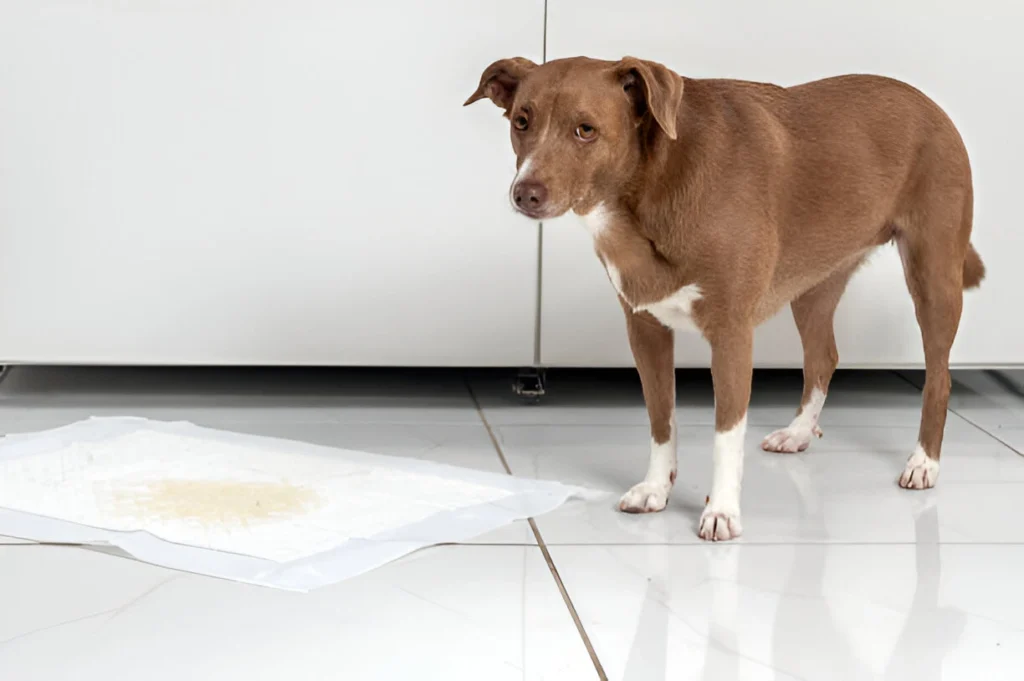
Elderly dogs may experience mishaps at least twice or three times per month. This indicates the need for a vet examination. You can assist your elderly companion by using suitable training strategies and pee pad alternates. These tools help them stay comfortable and dignified as they age.
Why are Pee Pads your older dog’s answer?
Having a reusable pee pad at home may be good for older dogs for a number of reasons, such as:
You reside in an apartment or a newly relocated area.
1. Walking your dog is really challenging.
Some dogs are simply not good companions on walks; they may be especially tense, hostile, or impish. Due to all of these factors, you may find it difficult to take your dog outside as frequently as you would like.
2. You yourself are not very mobile.
Regularly taking their dogs outside can be hard for pet owners with limited mobility, so having the best pee pad placed for the duration of the house can be very beneficial.
3. Residency in an elevated structure.
It may become more difficult to take your dog out on a regular basis as a result, particularly if your elderly dog has arthritis. Further, relocating to a new and unfamiliar location may cause your senior dog to become confused about where to use the restroom.
4. Your dog has a disability or is elderly.
Adult dogs that are elderly or disabled may have trouble moving around and urinating outside due to their general mobility issues. They can feel more at ease and have easier access to urination and bowel movements if a pee pad is placed throughout the house.
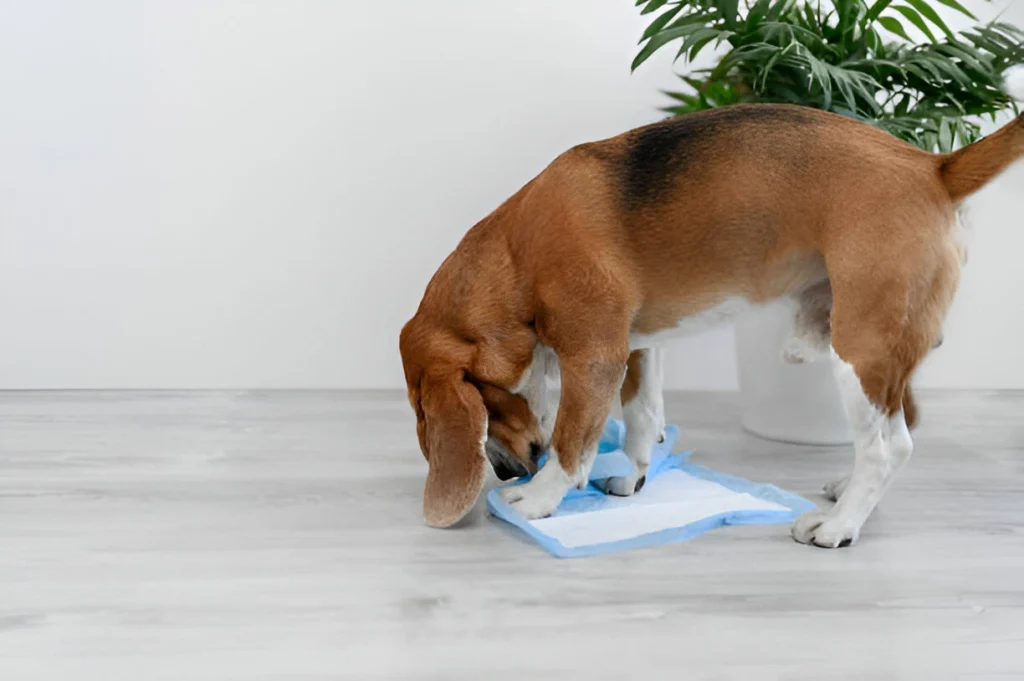
In summary
What are the most important factors to take into account when teaching an older dog to use a pee pad. or how to train senior dog to pee on pad, to sum up?
Repetition: Your dog will recognize that this is a new aspect of their potty routine if you repeat pee pad training every day for one to three weeks.
When utilized in a learning environment, dogs, like humans, react very well to repetition; when combined with rewards and positive reinforcement, this will promote positive behaviors.
Don’t discipline your dog because they won’t intentionally cause damage. Because it will take time for your dog to learn a new toilet training routine, you should never physically or verbally discipline them for using the restroom in inappropriate places.
Provide an accessible pee pad training older dogs and adult dogs with health or mobility problems will have a harder time getting around.
Having a large number of pee pads in easily accessible locations throughout the house will keep your dog comfortable and reduce the likelihood of mishaps.
You cannot rush this process; any good pet parent must exercise patience when introducing a new routine to their dog.
Moreover, your pet will only react to gentleness and friendly treatment. Anger and harshness are surefire ways to fail!
